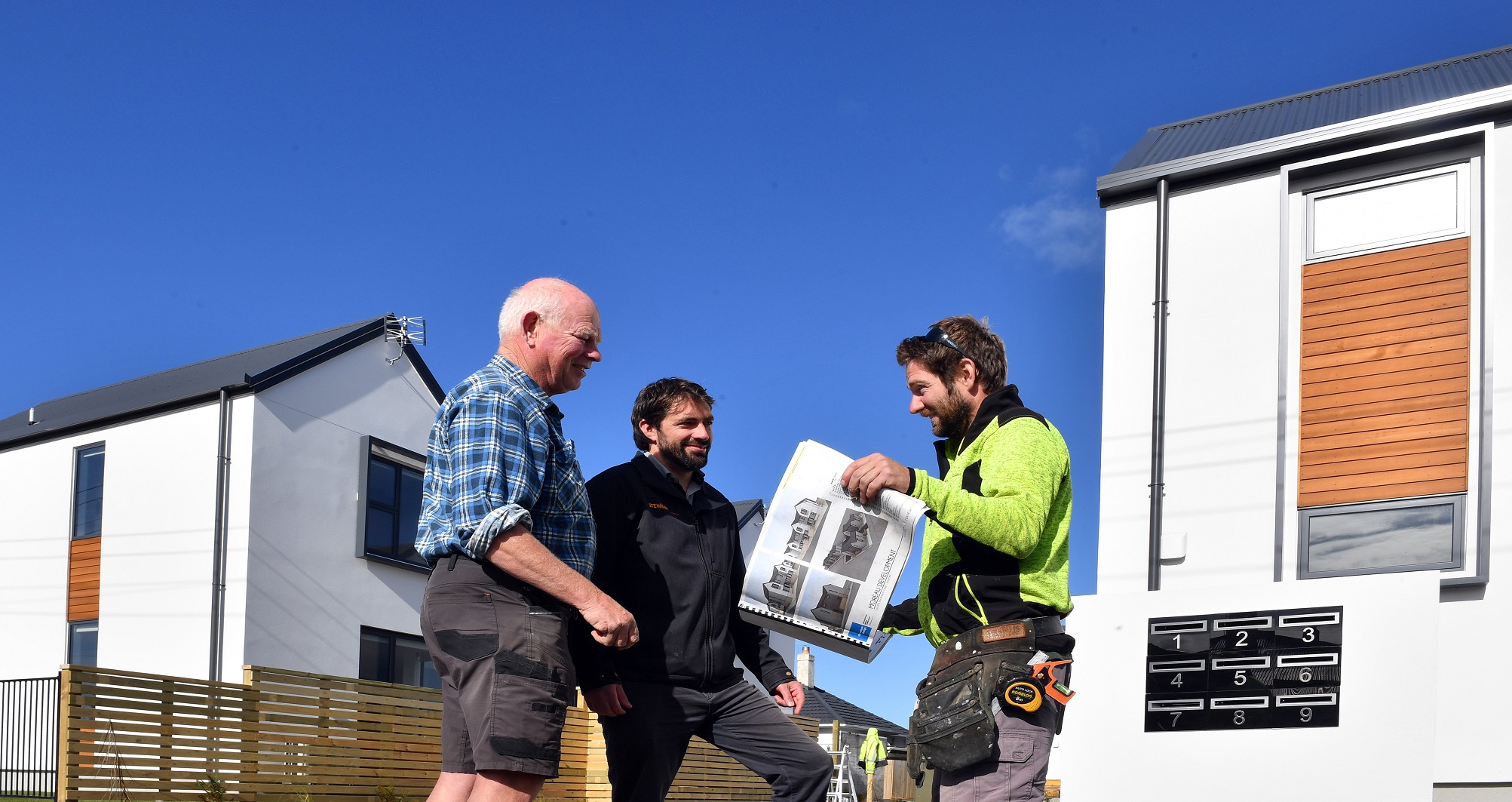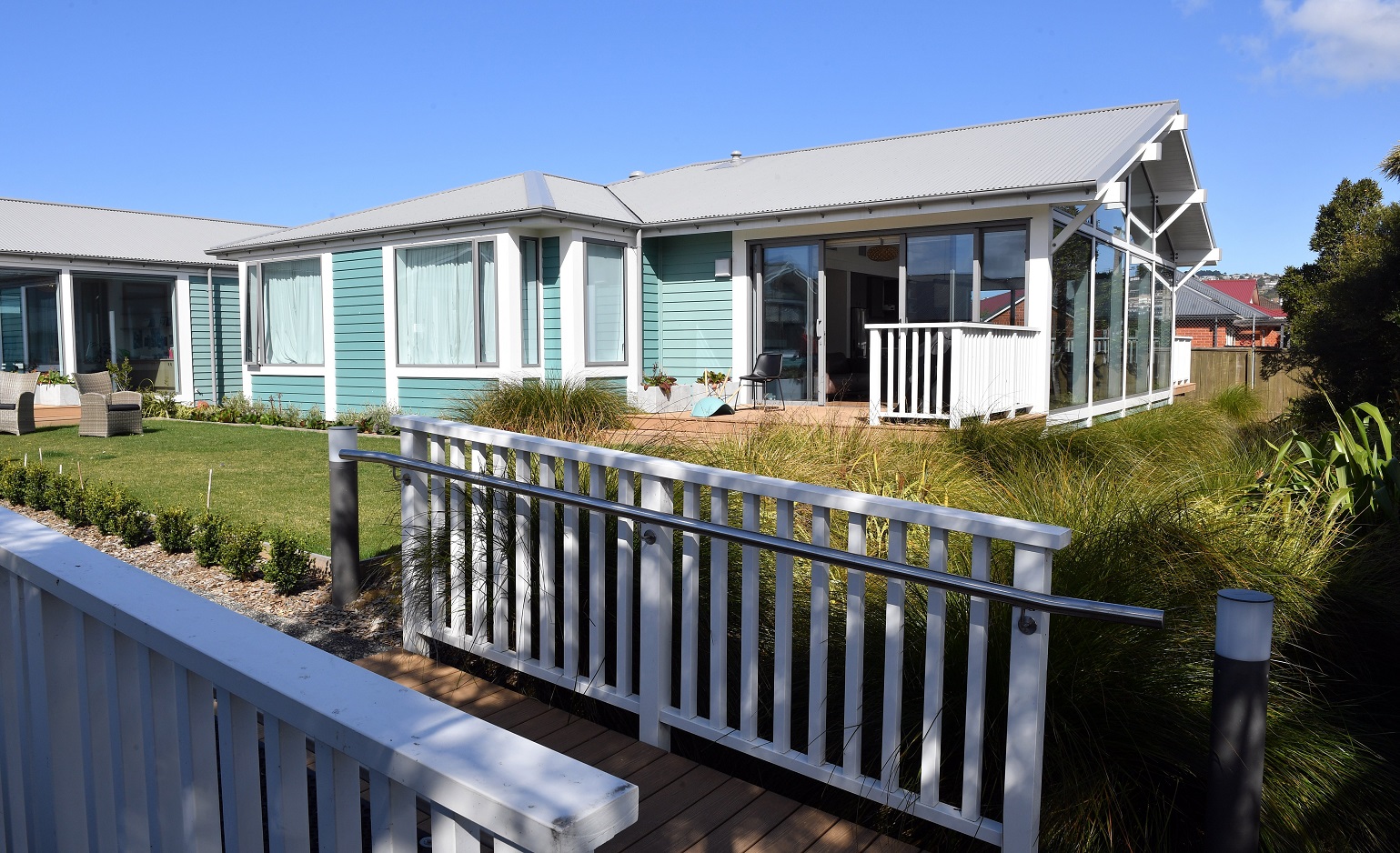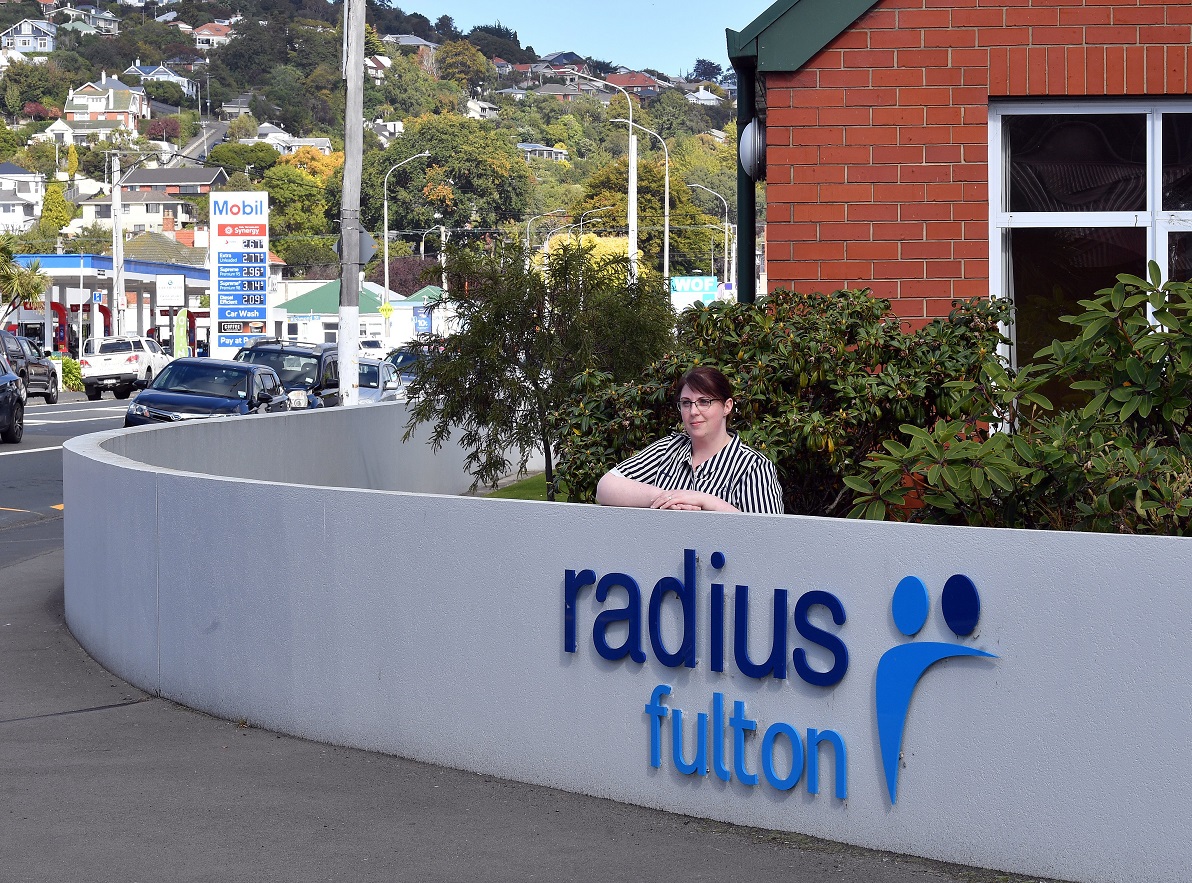
 Build or bolt?
Build or bolt?

Across southern Dunedin, townhouses are popping up and people are moving in. Meanwhile, other people are packing up and moving out — or thinking about it.
It is not a normal coming and going. It is a mixed response to the area’s predicted watery future of sodden ground, springs emerging and tides rolling in — unless coastal protection and other measures hold it back.
Liquefaction — when the ground becomes liquid in an earthquake — is also a risk here. Southern Dunedin is built on river mud and sand.
Sitting on her porch, Caversham homeowner Kayla Gray says one of her Fitzroy St neighbours has sold up and left for higher ground. Ms Gray is staying put, but thinks people should be given "options somehow" to leave.
In Fingall St in South Dunedin, an unemployed home-owner, wanting to remain anonymous, paints a bleak picture. He complains about council rate increases and a failure of the council to slow down traffic on his narrow road lined with old houses. Sickness has stopped him working and he feels lucky that he had already paid off his mortgage.
Increased flood risk is the last thing on his mind.
"I'll be dead by then."
South Dunedin Future’s programme manager Jonathan Rowe is tasked with consulting people and coming up with solutions for the Dunedin City Council and Otago Regional Council. He says people "have different risk tolerances".
Mr Rowe’s plan is expected by 2026. Until then, people will make their own choices based on understanding, views and their wealth. Some are unconcerned about climate change, love the beach life, and have money to afford a new or refurbished home with some flood protection. The water issue is not yet impacting ability to secure a mortgage or home insurance.
There are others with less money and fewer choices, living their lives in old homes that they own or rent, with no or limited flood protection. There are also people in social homes, owned by the city council and government housing agency Kainga Ora. Many of the social homes are old — more than half the 338 Kainga Ora social homes in South Dunedin were built before 1950, with only one built in the past three years.
There are also homeless people here, waiting for a social home — and the waiting lists are long. However, Kainga Ora is not building in South Dunedin until the area’s plan is determined. Kainga Ora regional director for Otago and Southland Kerrie Young says that "maintenance and retrofit" work is continuing, but it has "paused any significant investment decisions on new housing."
The council’s draft development strategy has also indicated that Caversham, in particular, will not achieve its housing "intensification aspirations" within the next 30 years because of "significant work" needed to the pipe infrastructure that could take 50 years. It admits this does "not align" with Kainga Ora’s wishes. However, what happens to pipes in South Dunedin is also part of the South Dunedin Future decision making.
While there is tremendous uncertainty, the council’s development strategy is categoric on one point: it is aiming for "no net loss of residential development" in South Dunedin over the next 30 years. While some parts may have "deintensification", other parts may be more populated.
Buildings that care
One plot on Hillside Rd is already heavily populated — and has been severely impacted by flooding.
The radius fulton care home has 93 elderly residents, including some in a dementia unit. The home was flooded in 2015 and 2017, causing damage, sewage contamination and requiring evacuation. The street out front is known as the "contamination vector" because a storm water pipe under it carries excess sewage in the worst rainstorms — and sometimes it has bubbled on to the street.
The home has subsequently invested in fortress-style flood protection. A 2m tall concrete flood wall has been erected in a ditch around the 5500sq m site. Instead of gates, access is over large humps.
If the street floods, water cannot get in. However, rain that falls inside the walls, and any emerging groundwater, cannot get out naturally. There are nine pumps to remove the water. Two metal tanks have been placed in the ground inside the enclosure to store temporarily about 20cu m of water. After any flooding subsides, a valve can be opened to slowly drain the water.
Booming business
Real estate agents continue to sell homes without such protection. At the junction of Macandrew Rd and flood-prone Surrey St in Forbury, a three-bed, century-old brick house sold recently for $640,000 — more than $20,000 above the listed minimum price. Its land information memorandum (LIM) report warns of climate change and the risks of flooding and liquefaction across the area.
The new owner did not want to talk, but a woman who answered the door said the "house has been here a long time, so I don’t think he’s worried".

"We got a really good price ... which just shows people are not too concerned. You get the odd person that doesn’t want to buy in South Dunedin, but prices are holding strong."
South Dunedin is "flat, easy to get around, close to the beach, heaps of amenities, schools and a pretty handy location for people — you also get a lot more value for your money."
It was up to buyers to make up their own minds, he said, but there was also a problem with "contradictory messaging" from the council, which was warning about rising waters, which could impact home owners’ equity, while also issuing building consents.
"Houses are going up on just about every corner. Why would the council issue all these building consents if they thought there would be future problems? And it’s hard to believe the government would put all that money into Hillside Workshops if they thought there was an issue."
The Hillside redevelopment has $105 million in government funding. A library and community complex, estimated to cost $21.4m, is being built on King Edward St in a partnership between property investor Positive Property Ltd and the council.
The council is also consenting developers to build homes, as long as they reach minimum floor level requirements, which are around half a metre above the highest flood depth in the 2015 flood, or a similar height above the crown of the street if the land did not flood.
Blue Sky Property Group has completed 55 buildings in southern Dunedin so far. Director Lyndon Fairbairn says the company spends a lot of "time and energy" on constructing solid foundations that are "not concrete slabs built on dirt".
All the company’s builds are sold before being built, and range from $700,000 to $1.5 million. One market is "downsizers" who want new, high-specification homes.
In Moreau St, another development company has completed nine attached townhouses — six with two bedrooms and three with three bedrooms. The site was previously two houses and a joinery business. Before that it was the stables for Forbury Park. The transformation is a venture between former All Black Ben Smith, Leigh Pickford — who owned the joinery — and Stewart Construction’s managing director David Grant, who says he gets "enjoyment from providing warm, dry homes".
Around Moreau St, the ground is modelled by GNS Science to become saturated — in the worst rainstorms and when tides are highest — as early as 2039. When questioned about the issue of rising waters, Mr Pickford said he thought the focus should be on upgrades to the pipes and pumping stations.
Eight of the nine homes were sold prior to completion, most as rental investments. At a cost of around $675,000 for a two-bed home only a little over 90sqm, and with a rental income of about $650 a week, the return is nearly 5% per annum plus capital gain.
Mr Grant says the homes are built 60cm above the crown of the street and foundations are 90cm below ground, on a bed of compacted gravel. A strip of native bushes around the buildings, and small turfed backyards, will help soak up some rain. However, significant space has been covered in the nine buildings and paving for parking.
Helen Clark Foundation deputy director Kali Mercier, the author of the report "Sponge Cities", says townhouse developments are "particularly bad" for reducing permeable surfaces. It’s "good practice to leave space for trees and shrubs that are good at absorbing rainwater".
Developer TGC, who has about 60 Dunedin homes under construction, some in southern Dunedin, and another 60 at design stage, has made a business decision not to build any more homes on the flat. Director George Hercus says there is a "risk of reputational damage if homes become unliveable, uninsurable" as the waters rise.
When asked why he thinks developers are busy here, he points to cheaper land prices and a shortage of land for development elsewhere.
"Price probably has a lot to do with it."
The Dunedin City Council did not respond by deadline to a request to comment on building in southern Dunedin.
Building for nature and people

Fluent Solutions director Melanie Stevenson, who is also a environmental engineer, worked on the project and says its sponge-city, nature-based solutions "reduce run off from the land, lessen need and cost of large stormwater pipes and pumps, provide natural treatment of stormwater before entering waterways, and provide green spaces for people and animals to enjoy".
Inside, the building has lofty ceilings and exposed timbers. Residents’ rooms are arranged in clusters, connected by short glass corridors. The design lets in light, but also enables the building to be divided into sections and moved to higher ground, if necessary.
Architect Ruth Whitaker, of Mason & Wales, led the design and says the solutions contribute to residents’ wellbeing. They get privacy, a connection to nature, and a place in the sun — while also still living in the heart of South Dunedin, close to shops.
While it may be possible to move the building, Ms Whitaker is also optimistic that there are even more "clever solutions" out there to help combat the rising waters and give decent living conditions for people.
"Dunedin can learn."
Dunedin architect Tim Ross specialises in passive houses constructed in ways that help make heating unnecessary. He has designed one-storey social houses for the council in Roslyn that are passive house certified — a first in New Zealand.
In southern Dunedin, he thinks affordable social housing is likely to mean building up — four or five storeys apartment blocks. The approach enables increased housing density and "incredible" energy efficiency, he says. It also releases land for water and plants — old stand-alone homes could be demolished.
"If talking about affordable social housing, that is the model I would be going after," the award-winning Architype architect said.
Warm, new homes are "life-changing" for people and buildings can be designed to cope with occasional floods.
However, Mr Ross stresses that flood-resilient buildings will not solve southern Dunedin’s problems when floods arrive more frequently.
"Use your imagination. Even if your building is above the flood water, you can’t function, you can’t get out your house or get to it, and your car is damaged. It is impractical. You can’t live surrounded by water.
"It is one thing to make sure buildings survive, but another to operate in an area that continues to get inundated."
If buildings are to be built higher, roads and infrastructure also need to be higher. A planned strategy is required that "we all agree on. It is tricky for any individual to come up with their own solution without direction from local government".
The South Dunedin Future plan is needed.












